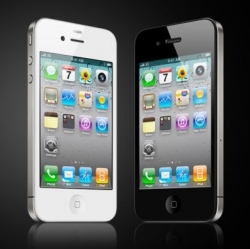
For average consumers, ‘3G’ and ‘4G’ are two of the most mysterious terms in the mobile technology dictionary, but they’re used relentlessly to sell phones and tablets. If you’re shopping for a new phone, the answer isn’t clear-cut, and you shouldn’t always go for the higher number. Our primer will help explain which technology to pick.
3G vs. 4G: What Are They?
First things first, the "G" stands for a generation of mobile technology, installed in phones and on cellular networks. Each "G" generally requires you to get a new phone, and for networks to make expensive upgrades. The first two were analog cell phones (1G) and digital phones (2G). Then it got complicated.
Third-generation mobile networks, or 3G, came to the U.S. in 2003. With minimum consistent Internet speeds of 144Kbps, they were supposed to bring "mobile broadband." There are now so many varieties of 3G, though, that a "3G" connection can get you Internet speeds anywhere from 400Kbps to more than ten times that.
New generations usually bring new base technologies, more network capacity for more data per user, and the potential for better voice quality, too.
4G phones are supposed to be even faster, but that’s not always the case. There are so many technologies called "4G," and so many ways to implement them, that the term is almost meaningless. The International Telecommunications Union, a standards body, tried to issue requirements to call a network 4G but they were ignored by carriers, and eventually the ITU backed down. 4G technologies include HSPA+ 21/42, WiMAX, and LTE (although some consider LTE the only true 4G of that bunch, and some people say none of them are fast enough to qualify.)
There’s one rule to follow: Each generation will offer faster Internet speeds than the last, that is, on the same carrier. Sprint’s WiMAX 4G is almost always faster than its CDMA 3G. But AT&T’s 3G HSPA can be faster than MetroPCS’s 4G LTE. You can rely on speeds to move up within your carrier, though.
This confusion is why we run our annual Fastest Mobile Networks story, which tests 3G and 4G networks in 20 cities nationwide. In last year’s tests, we generally found that Verizon’s 4G LTE network was the fastest, followed by T-Mobile 4G HSPA+, AT&T 4G HSPA+, Sprint 4G WiMAX, MetroPCS 4G LTE, Verizon 3G, and Cricket 3G, with Sprint 3G pulling up the rear. As AT&T and Sprint roll out new LTE networks, we expect them to be competitive with Verizon’s LTE speeds.
Check out Fastest Mobile Networks 2011 to find out which 3G or 4G network is fastest in your city.
Would you like to know more about LTE, which is becoming the global standard for 4G? Read our primer on What Is LTE? over at ExtremeTech.
When to Go For 4G
The mobile carriers are still building out their 4G networks, so first, you need 4G coverage to appreciate a 4G phone. Of the national carriers, Verizon and T-Mobile have the broadest 4G coverage. AT&T currently covers about a quarter of the U.S. population.
Sprint is in the middle of switching 4G systems, from WiMAX to LTE. The two are incompatible, so you must check coverage in your city for the specific variety of 4G you’re buying.
If you like to surf the Web and especially stream video, 4G can be heaven. If you connect a laptop to your mobile link, 4G makes a huge difference. In general, anything involving transferring large amounts of data gets a big boost from 4G. Watch out for the data limits on your service plan, though; it’s easy to use up a lot of data very quickly with 4G.
If you have a 3G phone and you’ve been frustrated with clogged-up networks, 4G may be the solution. You’ll be switching to a different, less-trafficked network for your Internet data. 4G won’t solve any dropped call problems, though, as all calls will be made over 3G networks until carriers switch to voice-over-LTE during the next few years.
Finally, if you want to future-proof yourself, get a 4G phone. 4G coverage is only going to get better, and that’s where the carriers are spending most of their money right now. As we move into 2013 and 2014, some carriers will even try to switch subscribers to 4G-only phones which make voice calls over the LTE network.
When to Buy 3G
If you want an iPhone, it’ll be 3G. End of story. We’re done. Apple may be releasing a 4G LTE iPhone later this year, but the company doesn’t currently have a 4G model. (The "4" in iPhone 4 refers to the model number, not the mobile technology.)
If you live in an area that doesn’t have 4G coverage, there’s no advantage to a 4G phone. In fact, you’ll have serious battery life problems if you buy an LTE phone and don’t disable 4G LTE, as the radio’s search for a non-existent signal will drain your battery quickly.
In general, if you value battery life more than Internet speeds, there’s still life in 3G yet. We’ve seen significantly shorter usage times on 4G devices than on 3G devices, most notably on Verizon and Sprint phones. (Our LTE explainer goes into detail as to why that’s the case, and why T-Mobile’s HSPA+ 42 is currently the least battery-hogging form of 4G.) We’ll see that situation improve over the next two years as integrated 3G/4G chips arrive, and then as carriers switch to 4G for voice calling. Of course, you can also buy a 4G phone and turn the option off using a menu option or downloaded app.
I hope this clears up the 3G vs. 4G dilemma. If you have anything to add, please continue the discussion in the comments below.
